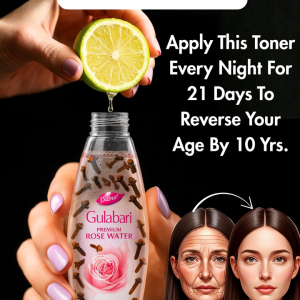
Noticed faint vertical lines running from the base to the tip of your fingernails as you’ve gotten older? You’re not the only one.
These changes often become more noticeable after age 40. While typically harmless, vertical ridges can sometimes be a sign of underlying health issues. So what causes them—and when should you be concerned?
What Are Vertical Nail Ridges?
Vertical ridges—also known as longitudinal striations—are raised lines that extend from the cuticle to the nail’s edge. Their depth and visibility can differ from person to person and tend to become more prominent with age.
In most cases, these ridges are simply part of the natural aging process. Just as your skin loses elasticity and your hair grays, your nails undergo structural changes as well. Over time, the production of keratin—the protein that makes up your nails—can slow down or become inconsistent, which changes the nail’s surface.

Common Causes of Nail Ridges After 40
1. Aging
The leading cause is aging itself. As you grow older, your body’s ability to regenerate skin cells slows down—including cells in the nail matrix (the area beneath the cuticle where nails begin to form). This slower growth can result in uneven keratin production and, consequently, vertical ridges.
2. Dry Nails
As with aging skin, nails can also dry out more easily over time. A loss of moisture can make nails brittle and highlight natural ridges. Frequent contact with water, soaps, or cleaning agents can worsen this dryness.
3. Nutrient Deficiencies
Lower levels of nutrients like biotin, iron, zinc, and magnesium can weaken the nails and make ridges more noticeable. Since the body’s ability to absorb nutrients often declines with age, these deficiencies can become more common after 40.
4. Potential Health Concerns
In some situations, vertical ridges may point to broader health issues such as poor blood flow, thyroid imbalances, or autoimmune conditions like rheumatoid arthritis. If you’re also experiencing other signs—like thinning hair, fatigue, or dry skin—it may be worth consulting a medical professional.

When to See a Doctor
Though vertical ridges are generally harmless, you should seek medical advice if they come with:
- Noticeable changes in nail color, especially dark lines or streaks
- Splitting, thickening, or peeling of the nail
- Pain, swelling, or redness around the nail
These symptoms could indicate a fungal infection, nail trauma, or—in rare cases—subungual melanoma, a serious form of skin cancer that develops beneath the nail.

Caring for Your Nails as You Age
To reduce the appearance of ridges and keep your nails in good condition, try these easy tips:
- Use moisturizing hand and nail creams regularly, especially after washing.
- Keep yourself well-hydrated to prevent brittle nails.
- Eat a balanced diet rich in essential vitamins and minerals—especially A, C, B-complex, iron, and zinc.
- Avoid over-filing your nails or using harsh manicure tools.
- Ask your doctor if biotin supplements might be helpful for your nail health.
Taking these steps can go a long way in keeping your nails looking smooth and healthy—even as the years go by.




